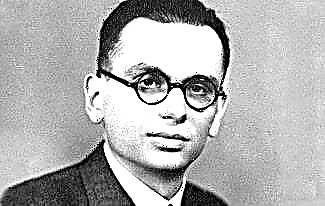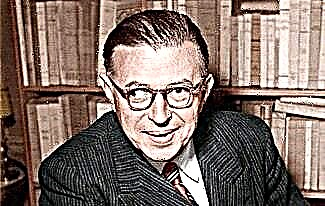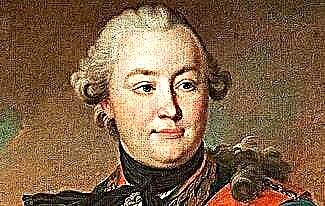During its more than a thousand-year history, Yaroslavl has gone through a lot. One of the oldest Russian cities during the Time of Troubles played a key role in the preservation of Russian statehood. After the city elite treacherously surrendered the city to the Poles, the Yaroslavl people gathered a militia and drove the invaders out of the city. A little later, it was in Yaroslavl that the soldiers of the First and Second Militia gathered, in the end defeating both the invaders and their home-grown henchmen.

The chain of facts from the history of Yaroslavl given below can serve as a good hypothetical illustration of the path of development of Russia without external armed invasions and social cataclysms. The city, located far from the outer borders, demonstrated progressive development even in the conditions of the Russian nature, which was not the most generous to man, and lack of personnel and capital. For centuries, Yaroslavl people, according to an old saying, put each bast in a line. Someone knocked down butter, which was then sold to Europe (“Vologda” is a recipe for production, not a place. Hundreds of tons of export butter were produced in the Yaroslavl province). Someone was making leather and fabrics - all these endless descriptions of clothes and shoes from Russian classics not because of their predilection for clothes, but because of the status of fabrics - their prices differed significantly. And someone gave up peasant labor and went to the capitals for latrine trades. Then the landowner demanded that the serf return - the harvesting shop! And he received paper from St. Petersburg. They say that such and such cannot be released, because without him the production of artificial marble, which is so necessary for the capital and surrounding cities, will stop (a real case, the master's name was I. M. Volin, and the governor's intervention was required to correct his passport).
And gradually the city of Yaroslavl from the provincial became the provincial. And there the postal road and the railway were pulled up. You see, both electricity and running water. Trams were running, the university opened ... If not for the regular militias, hospitals and other "everything for the front", Yaroslavl could well have become a chic city with a million population.
1. In order to found Yaroslavl, Yaroslav the Wise, according to legend, had to defeat the bear. The prince demanded that the Merians, who lived in the village of Medvezhy Ugol, stop plundering the Volga caravans and be baptized. In response, the Merians set a stern animal against the prince. Yaroslav hacked the bear to death with a battle ax, after which questions about robbery and baptism disappeared. At the site of the battle with the bear, the prince ordered to build a temple and a city. The generally accepted date for the foundation of Yaroslavl is 1010, although the first mention of the city in chronicles dates back to 1071.
2. The Austrian Herberstein, who twice visited Russia in the 16th century, noted in his notes that the Yaroslavl Territory occupies a leading position in Muscovy in terms of land wealth and abundance.
3. The Yaroslavl Spassky Monastery in the middle of the 16th century was the richest landowner in the area. He owned 6 villages, 239 villages, fishing, salt breweries, mills, wastelands and hunting grounds.

4. The most powerful impetus to the development of Yaroslavl was given by the annexation of Kazan and Astrakhan. The city found itself at the intersection of river and land trade routes, which stimulated the development of trade and local crafts.
5. In 1612 Yaroslavl was the de facto capital of Russia for several months. The Second Militia against the Poles gathered in the city, and the “Council of All Lands” was created. The march of the militia, assembled by K. Minin and D. Pozharsky, to Moscow ended in success. The years of turmoil that devastated Russia is over.
6. In 1672, 2825 houses were counted in Yaroslavl. More was only in Moscow. There were 98 handicraft specialties, and 150 handicraft professions. In particular, tens of thousands of skins were made annually, and Yaroslavl castles were exported to European countries.
7. The first stone church in the city was the Church of St. Nicholas Nadein. It was erected in 1620-1621 on the banks of the Volga. The 17th century was marked by the flourishing of Yaroslavl temple architecture. The Church of St. John Chrysostom was built in Korovnitskaya Sloboda, the Tolgsky Monastery, the Church of St. John the Baptist and other architectural monuments.
8. In 1693, the first in Russia postal route Moscow - Arkhangelsk passed through Yaroslavl. A few years later, a system of canals opened, which made it possible to connect Yaroslavl with the Baltic Sea and the recently founded St. Petersburg.
9. The city has repeatedly suffered from catastrophic fires. The worst fire occurred in 1658, when most of the city burned down - about 1,500 houses and three dozen churches alone. The fires of 1711 and 1768 were weaker, but thousands of houses were lost in them, and the losses were estimated at hundreds of thousands of rubles.
10. Catherine II after visiting Yaroslavl called it “the third city in Russia”.
11. Already in the XVIII century in Yaroslavl, fabrics, paper and glass were produced on an industrial scale. The turnover of some enterprises amounted to hundreds of thousands of rubles a year. In particular, the Yaroslavl Paper Manufactory produced goods for 426 thousand rubles.
12. The first documented attempt by the Yaroslavl people to fight for their rights ended in failure - 35 workers at the Savva Yakovlev manufactory, who asked to be released from the factory or at least to lower prices in the factory shop, were punished with lashes. True, the prices in the shop were also reduced (1772).
13. Yaroslavl became the provincial city in 1777, and the center of the Yaroslavl and Rostov dioceses - in 1786.
14. In 1792 the Yaroslavl landowner A. I. Musin-Pushkin bought a collection of old books and manuscripts from the former archimandrite of the Spassky monastery, rector of the Slavic seminary and censor of the Yaroslavl printing house I. Bykovsky. The collection included the first and only list of "Words about Igor's Host." The list burned down in 1812, but by that time copies had been removed. Now in Yaroslavl there is a museum “Words about Igor's Host”.
15. Yaroslavl is the birthplace of the first magazine in Russia that was published outside the capitals. The magazine was called “Solitary Poshekhonets” and was published in 1786 - 1787. It published the first topographical description of the Yaroslavl province.
16. The first Russian professional theater was organized in Yaroslavl through the efforts of Fyodor Volkov. The first performance of the theater took place on July 10, 1750 in the tanning barn of the merchant Polushkin. The audience saw Racine's drama Esther. The success was amazing. Its echoes reached St. Petersburg, and after a year and a half Volkov and his colleagues formed the backbone of the troupe of the Russian Theater.
17. The war of 1812 did not reach Yaroslavl, but a large officers' hospital was deployed in the city. The Russian-German corps was formed from prisoners of war of different nationalities, placed in a special camp, in which the famous Karl Clausewitz served as a lieutenant colonel.
18. In 1804, at the expense of industrialist Pavel Demidov, a Higher School was opened in Yaroslavl, which was only slightly inferior in status to the universities of that time. However, there were no people willing to study in the city, so the first five students were brought from Moscow.
19. At the beginning of the 19th century, there was not a single bookstore in Yaroslavl. And when the government decided to publish the regional newspaper Severnaya Beelea, there was not a single private subscriber to it. The situation with bookstores began to improve by the middle of the century - there were already three of them, and the merchant Shchepennikov rented books in his book house.
20. The Yaroslavl breed of cows was developed in the middle of the 19th century and quickly became popular throughout Russia. Already 20 years after the registration of the breed in the Yaroslavl province there were 300,000 such cows, 400 oil mills and 800 cheese dairies.
21. In 1870, a railway came to Yaroslavl - a connection with Moscow was opened.
22. The water supply system in Yaroslavl appeared in 1883. Water from a tank with a volume of 200 cubic meters was supplied to houses only in the city center. The rest of the townspeople could collect water in five special booths, which were located in the city squares. To collect water, you had to buy a special token. But a more or less centralized drainage system was installed already in the 1920s.
23.December 17, 1900 tram traffic was launched. The installation of the tracks and the delivery of the German rolling stock was carried out by a Belgian company. Electricity was generated by the city's first power plant, which opened on the same day.

24. The formal birthday of Yaroslavl University is November 7, 1918, although the decree on its establishment was signed by V. Lenin in January 1919.
25. A third of the city was completely destroyed during the suppression of the White Guard uprising in 1918. 30,000 residents were left homeless, and the population dropped from 130,000 to 76,000.
26. During the Great Patriotic War, Yaroslavl produced two thirds of all tires in the Soviet Union.
27. On November 7, 1949, the first trolleybuses drove through the streets of Yaroslavl. Interestingly, the first Soviet trolleybuses were assembled in the city since 1936, but they were sent to Moscow and Leningrad. In Yaroslavl, trolleybuses of Tashkent production were operated - assembly lines were transported there in 1941. And in Yaroslavl, even double-decker trolleybuses were assembled.
28. The action of the feature film "Afonya" for the most part takes place on the streets of Yaroslavl. The city has a monument to the heroes of this comedy.
29. In Yaroslavl, some of the events of the famous novel by Veniamin Kaverin “Two Captains” develop. On the territory of the regional children's and youth library there is a museum dedicated to the writer's work and prototypes of the heroes of the novel.
30. Now the population of Yaroslavl is 609 thousand people. By the number of inhabitants, Yaroslavl ranks 25th in the Russian Federation. The maximum value - 638,000 - the figure for the number of inhabitants reached in 1991.









